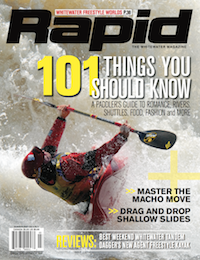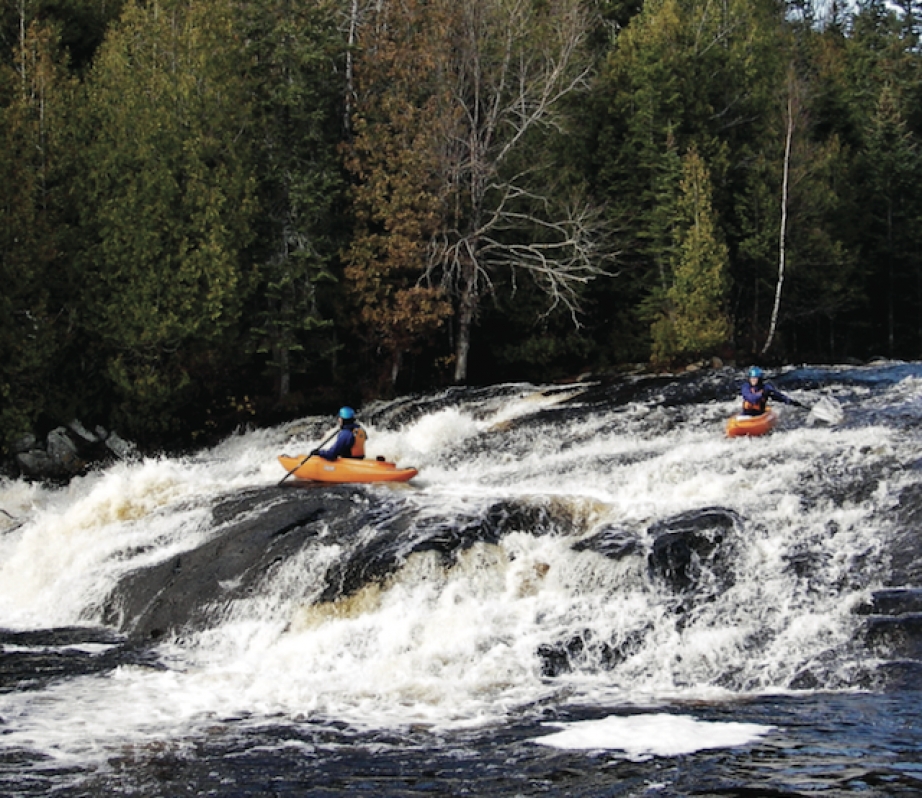I set up for shallow slides much the same as I set up for any creek line. I start opposite the side I want to end up on and carry momentum into the rapid to cross the grain of the falling water. On shallow slides in an open boat carrying momewntum is even more important than in a kayak, since an onside forward stroke wants to spin the boat and any strokes in one inch of water don’t work very well.
On the Independence River in New York State I started down a narrow shallow slide that fanned out as it steepened, before dropping into a very tiny cauldron surrounded by sloping granite banks. With some surprise I found myself grinding down angled left as planned to cross the grain, but definitely not moving left. Matter of fact, as I was approaching the landmark rooster tail at the lip of the steeper bit, I was sliding even further to my right toward the cauldron—not at all where anyone would intend to go. Finishing the drop backwards seemed like the best of the worst, and even though there was so little water cascading over the rocks you could hardly call it a rapid, it was enough to drown out the laughter of everyone on shore.
It was several months before I came up with a plausible explanation of why I’d gotten so far off line.
On the Doncaster, a classic Quebec spring run, I watched the same thing happen. In this photo, the boater is trying to drive river left but the water pushes him out towards the middle of the rapid. He either didn’t come into the rapid with enough forward momentum to begin with, or the drag on the bottom of the boat in the shallow water caused the boat to slow down and move slower than the water. Either way, if you’re not moving faster than the water, crossing the grain turns into a scary back ferry.
Think back to the old days when we all used the back ferry to descend rapids slowly. A back ferry works because the canoe is moving slower downstream than the current, due in this case to your backpaddling. The water pushes on the exposed side of the canoe moving the craft laterally across the river.
On a shallow slide you get the same effect when your creek boat is slowed by the friction of the river bottom.
As soon as you lose forward momentum the current begins to take your boat with it. Aligned perfectly with the current, you’re going where the water is going. Any angle in either direction and presto, you are in back ferry mode, whether you like it or not!
So far, I’m not setting up to back ferry down slides. I still much prefer maintaining forward speed and driving toward the direction I want to go.
However, understanding how the friction in shallow-water slides slows my boat, I can always try to claim I was back ferrying when I end up beached on shore.
Who knows, maybe it won’t be too long before we’re all back ferrying off waterfalls… you go first.

This article first appeared in the Summer 2007 issue of Rapid Magazine.




